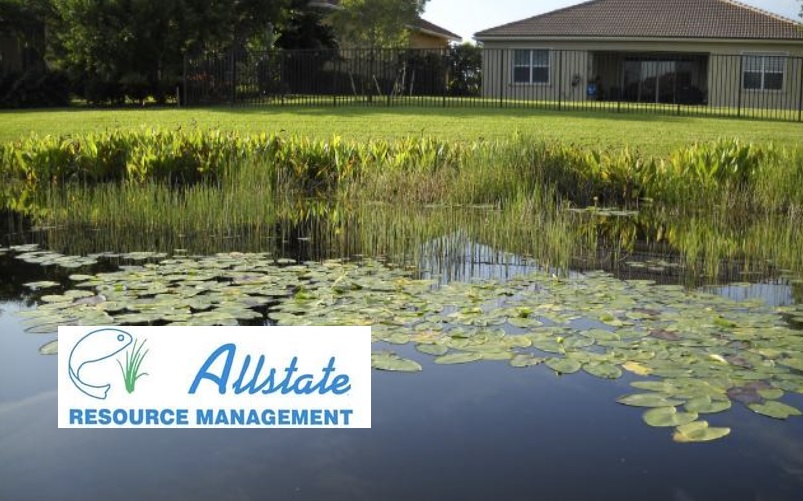“Why Are These Plants Behind My House?” by Allstate Resource Management
“Why Are These Plants Behind My House?”
by Allstate Resource Management
Many homeowners in South Florida have properties that are adjacent to mitigation areas but very few have an understanding as to what they are or why they are there. This article will answer some of these questions and give you a better understanding about the role mitigation sites play in your community.
Homeowners have all sorts of names for the planted areas by their homes. Some call them preserves, some call them swamps, some call them natural areas but they all share a common origin and purpose. Whether they are full of trees or stretches of plants along a lake shoreline, they are all what are known as mitigation. Mitigation is an attempt to lessen or alleviate the environmental impact of development and construction in our area. When a developer plans to build a community the location must first be surveyed to determine if important natural resources and sensitive areas will be disturbed due to the project. Before any construction can begin, the developer must submit a plan to create and maintain areas that will replace what is lost when the development is built. Once the plan is approved, a permit is issued for the mitigation and the project can begin. Without the mitigation, your neighborhood could not even exist. When the builder turns the property over to a homeowners association, the association then assumes the responsibility for the mitigation and its care.
There are three basic kinds of mitigation areas: wetland preserves, upland preserves and littoral zones. Wetland preserves are lower lying areas that are partly to completely flooded most of the year and are largely comprised of aquatic plants and grasses, and may have tree islands or deep water pools. Upland preserves are wooded areas that sit at higher elevations and tend to have drier soils and are usually comprised of more trees and shrubs. Littoral zones are submersed shelves that run around the perimeter of lakes and are planted with a variety of plants that can grow in flooded conditions.
Quarterly inspections and status reports are required by the agency that issued the mitigation permit for your community. These are to ensure that the site lives up to its required environmental obligation and that it complies with agency standards. Regular maintenance visits, by trained and licensed personnel, are necessary to keep mitigation areas in compliance. In order to be in compliance the areas must be covered by the proper percentage of beneficial, native plants and be within the acceptable limit of invasive, exotic plants.
Mitigation sites are designed to replace a natural ecosystem and are not meant to be perfectly manicured landscapes. Homeowners should never take it upon themselves to remove plants, trim or cut plants or add plants to mitigation areas. Remember, these areas are permitted and unapproved alterations could result in complications or fines, just like any other permit you have when you do work on your house. Homeowners should also be sure that their landscapers do not dump debris such as palm fronds, hedge trimmings and grass clippings into the mitigation by their homes. All mitigation is monitored for compliance. When the standards set by the oversight agency are not met, the entity responsible for the upkeep of the site may be financially liable to bring the site back into compliance.
Many homeowners don’t realize the benefits of these re-created natural areas. They see them as a burden with no redeeming qualities but there are several that are commonly overlooked. These areas provide habitat to several native species, some of which are threatened or even endangered. In addition to habitat for animals mitigation provides a pathway to replenish the aquifers that supply the drinking water here in South Florida. As more and more development occurs, we are essentially “capping” our water supply’s recharge mechanism with concrete and asphalt. Increased population creates increased demand for water. At the same time our system’s ability to provide the needed water is being reduced. Wetlands and preserves act like a sponge to capture water that would normally be lost to storm drains and funnels it into our depleted aquifers. This sponge affect also aids in flood prevention. Wetlands can hold a considerable amount of storm flow and alleviate your community’s storm water drainage system. Littoral plantings around your lake also help absorb nutrient runoff. Florida lawns don’t get green by themselves. We use a lot of fertilizer and when the rains come and the grounds get soaked, some of that fertilizer ends up in our lakes. This then feeds algae in the lakes and creates those unpleasant mats of floating, green algae around the water body. The bands of wetland plants around the shoreline act as a buffer and absorb some of the nutrient runoff as it enters the water.
Our staff at Allstate realizes that your mitigation maintenance is an important responsibility. We hope that this has shed some light on the questions you may have. One of our goals in our pledge to service to you is educating the homeowners and helping everyone understand the value of the aquatic resources within your community. If we can provide any further guidance or assistance please feel free to call our office.
 By: Stephen Montgomery
By: Stephen Montgomery
Allstate Resource Management
6900 SW 21st Court, Building #9
Davie, Florida 33317
Phone: (954) 382-9766
Fax: (954) 382-9770
Discover more from SFPMA
Subscribe to get the latest posts sent to your email.


